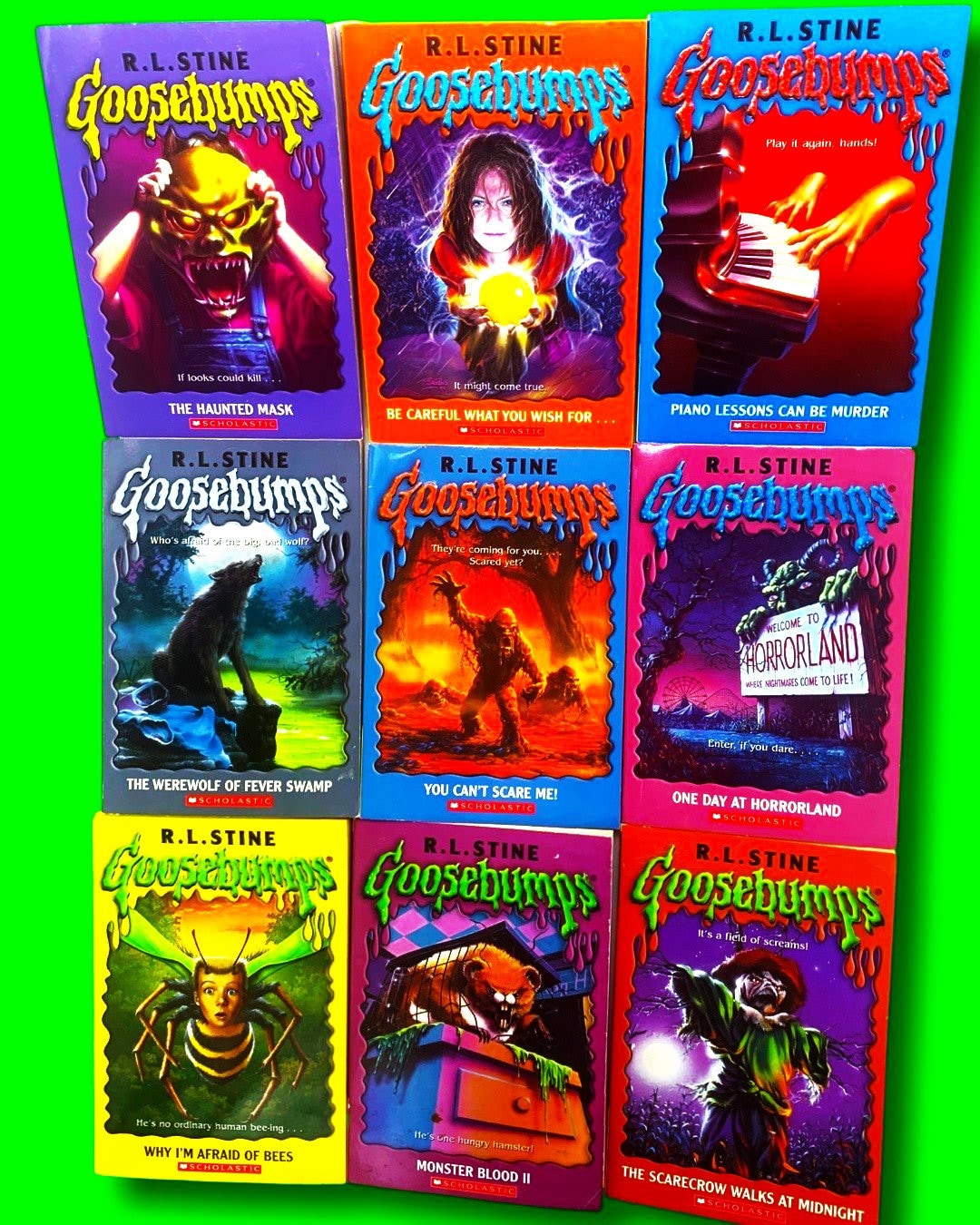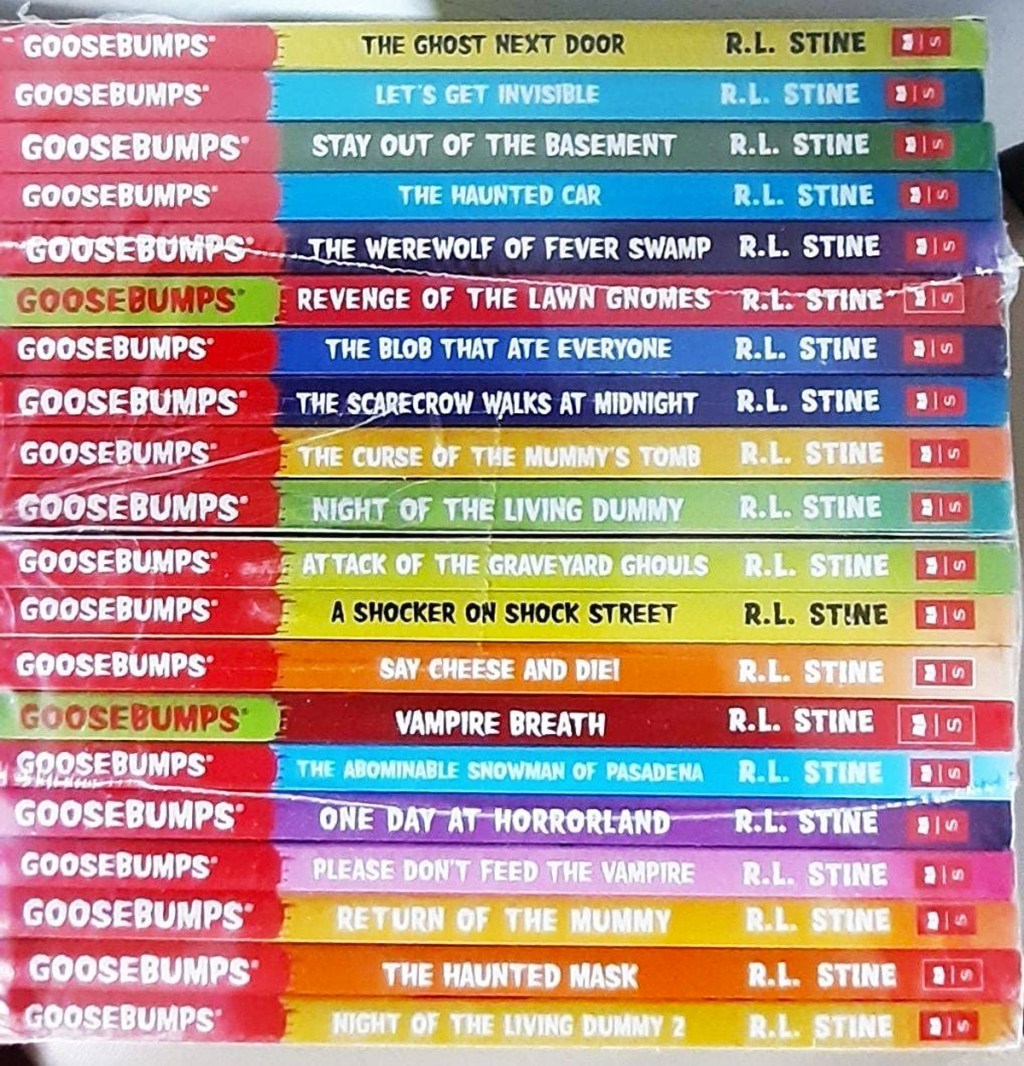Are you a Goosebumps enthusiast who wants to know more about the worst Goosebumps books? If so, you're in the right place. This guide will delve into the most criticized Goosebumps books, exploring why they didn't resonate with fans as much as others. Goosebumps, as a series, has thrilled millions of readers worldwide, but not every book in the franchise has been a hit.
Goosebumps, created by R.L. Stine, has been a staple in children's horror literature since its debut in 1992. While many titles in the series have received praise for their spine-tingling stories, some have faced criticism for various reasons. In this article, we will explore these titles and examine the factors that contributed to their less-than-stellar reception.
This article aims to provide an in-depth analysis of the worst Goosebumps books, helping readers understand why they didn't live up to expectations. Whether you're a long-time fan or a newcomer to the series, this guide will offer valuable insights into the highs and lows of Goosebumps literature.
Read also:How Strapless Bra With Thick Band Revolutionizes Comfort And Style
Table of Contents:
- History of Goosebumps
- Criteria for Evaluating Goosebumps Books
- The Worst Goosebumps Books
- Common Issues in Worst Goosebumps Books
- Reader Reviews and Feedback
- Statistics on Goosebumps Book Sales
- About R.L. Stine
- Tips for Choosing Goosebumps Books
- Comparison with Other Horror Series
- Conclusion
History of Goosebumps
Goosebumps, created by R.L. Stine, first hit the shelves in 1992 and quickly became one of the most popular children's book series worldwide. The series is known for its chilling tales that blend horror with humor, making it accessible for young readers. Over the years, Goosebumps has expanded into multiple series, including "Goosebumps Classic," "Goosebumps HorrorLand," and "Goosebumps Most Wanted."
However, not all Goosebumps books have been equally successful. Some titles have received criticism for their plotlines, character development, or overall execution. Understanding the history of Goosebumps is essential to evaluating which books fall short and why.
Criteria for Evaluating Goosebumps Books
When assessing the worst Goosebumps books, several factors come into play. These criteria include:
- Plot Quality: Does the story have a compelling narrative that keeps readers engaged?
- Character Development: Are the characters well-rounded and relatable?
- Originality: Does the book offer a fresh take on horror, or does it feel repetitive?
- Scare Factor: Does the book deliver the chills that Goosebumps fans expect?
- Reader Feedback: What do fans and critics say about the book?
These criteria help us identify which Goosebumps books may not have lived up to the series' high standards.
The Worst Goosebumps Books
Book 1: Say Cheese and Die!
While "Say Cheese and Die!" is often regarded as one of the best Goosebumps books, some readers have criticized it for its predictable plot. The story revolves around a cursed camera that causes harm to anyone who takes a picture with it. While the concept is intriguing, some fans argue that the resolution feels rushed and lacks depth.
Read also:Date Night Dresses Near Me Your Ultimate Guide To Finding The Perfect Outfit
Key criticisms include:
- A lack of character development.
- A predictable storyline that doesn't offer much surprise.
- A resolution that feels unsatisfying to some readers.
Book 2: The Werewolf of Fever Swamp
"The Werewolf of Fever Swamp" is another Goosebumps book that has received mixed reviews. The story follows two brothers who stumble upon a cursed swamp and encounter a werewolf. While the premise is exciting, some readers have pointed out flaws in the book's execution.
Common criticisms include:
- Underdeveloped characters that fail to resonate with readers.
- A plot that relies too heavily on stereotypes.
- A lack of tension or suspense in key moments.
Book 3: The Haunted Mask
"The Haunted Mask" is a fan-favorite, but it has its detractors. The story centers on a girl who buys a cursed mask that causes her to transform into a monster. While the concept is creative, some readers feel that the book falls short in certain areas.
Criticisms include:
- A repetitive plot that feels similar to other Goosebumps titles.
- Characters that lack depth and motivation.
- A resolution that feels rushed and incomplete.
Common Issues in Worst Goosebumps Books
While each Goosebumps book has its unique strengths and weaknesses, several common issues emerge when evaluating the worst books in the series:
- Predictability: Many readers criticize certain Goosebumps books for their predictable plots, which can diminish the excitement of reading.
- Repetition: Some titles feel like rehashes of previous stories, offering little innovation or originality.
- Character Depth: Underdeveloped characters are a recurring issue, making it difficult for readers to connect emotionally with the story.
- Resolution: Unsatisfying endings can leave readers feeling disappointed, even if the rest of the book is enjoyable.
Addressing these issues could help future Goosebumps books avoid falling into the "worst" category.
Reader Reviews and Feedback
Reader reviews play a crucial role in evaluating Goosebumps books. Platforms like Goodreads, Amazon, and Reddit offer valuable insights into how fans perceive the series. Many readers appreciate Goosebumps for its ability to deliver scares while maintaining a lighthearted tone. However, some reviews highlight the flaws in certain books, such as:
- A lack of tension or suspense.
- Characters that feel one-dimensional or uninteresting.
- Stories that rely too heavily on clichés or tropes.
By analyzing reader feedback, we can better understand why some Goosebumps books are considered the worst in the series.
Statistics on Goosebumps Book Sales
Goosebumps has sold over 400 million copies worldwide, making it one of the best-selling book series of all time. However, not all titles have contributed equally to this success. According to data from Nielsen BookScan, some Goosebumps books have significantly lower sales figures than others. Factors influencing sales include:
- Marketing Efforts: Books with stronger promotional campaigns tend to sell better.
- Release Timing: Books released during peak seasons or tied to movie adaptations often perform better.
- Reader Preferences: Certain themes or plotlines may appeal more to the target audience.
Data from sources like Publishers Weekly and industry reports provide valuable insights into which Goosebumps books have struggled in terms of sales.
About R.L. Stine
R.L. Stine, the mastermind behind Goosebumps, is one of the most successful children's authors of all time. Born Robert Lawrence Stine on October 8, 1943, in Columbus, Ohio, he has written over 300 books, including the Goosebumps series, Fear Street, and The Nightmare Room.
Stine's ability to blend horror with humor has captivated millions of young readers. However, even the most talented authors face criticism, and Goosebumps is no exception. Understanding Stine's background and writing style can provide context for why some Goosebumps books are considered the worst.
Tips for Choosing Goosebumps Books
For fans looking to explore the Goosebumps series, here are some tips to help you choose the best books:
- Read Reviews: Check online reviews to gauge reader sentiment about specific titles.
- Explore Fan Favorites: Start with books that are frequently recommended by fans.
- Avoid Repetitive Themes: If you notice a book's plot feels similar to others, consider skipping it.
- Experiment with Subseries: Try books from different Goosebumps subseries to find your favorites.
By following these tips, you can maximize your enjoyment of the Goosebumps series while avoiding the worst books.
Comparison with Other Horror Series
Goosebumps is often compared to other children's horror series, such as "Point Horror," "Fear Street," and "Are You Afraid of the Dark?" While each series has its unique strengths, they also share common challenges, such as maintaining quality across multiple titles. Comparing Goosebumps with these series can provide additional context for evaluating its worst books.
Key differences include:
- Goosebumps' focus on humor and lighthearted scares.
- Fear Street's darker, more mature themes.
- Point Horror's emphasis on suspense and mystery.
Understanding these distinctions can help readers appreciate the nuances of Goosebumps and its place in the horror genre.
Conclusion
In conclusion, while Goosebumps has produced numerous best-selling and beloved titles, some books in the series have fallen short of expectations. By examining the worst Goosebumps books, we can gain a deeper understanding of what makes the series successful and identify areas for improvement. Whether you're a die-hard fan or a newcomer, this guide has provided valuable insights into the highs and lows of Goosebumps literature.
We invite you to share your thoughts in the comments below. Which Goosebumps books do you consider the worst, and why? Don't forget to explore other articles on our site for more insights into the world of children's horror literature.


